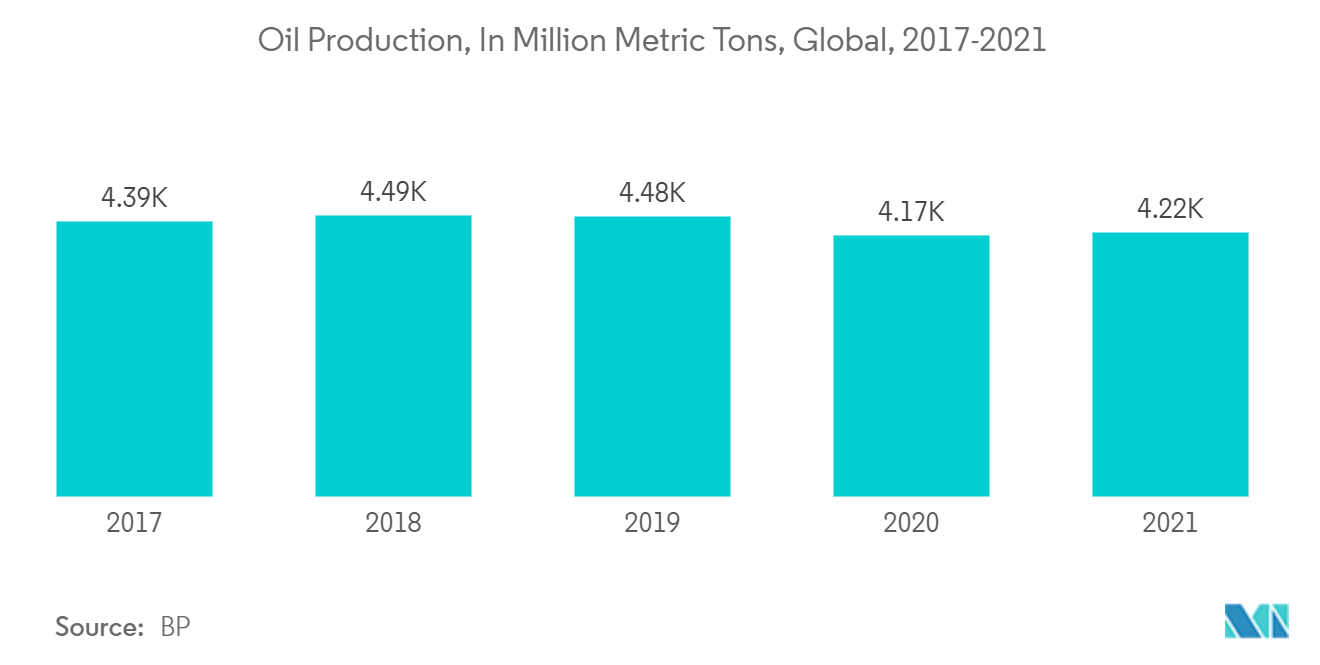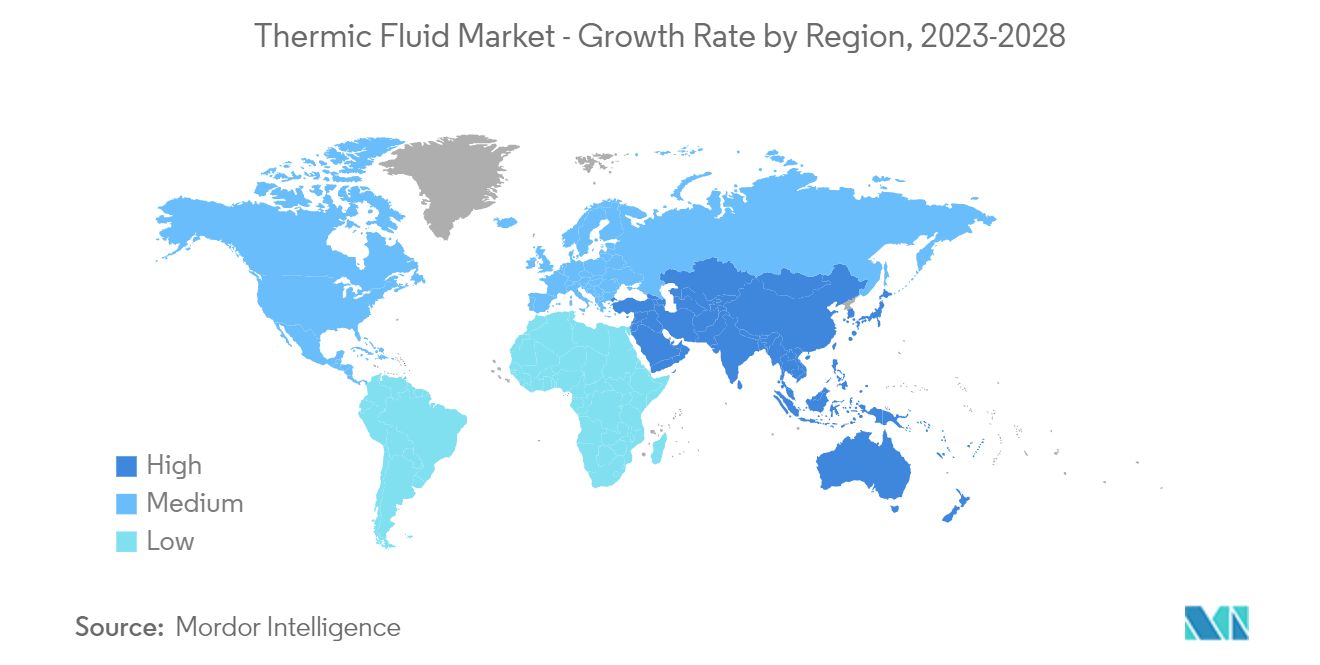Market Trends of Thermic Fluid Industry
This section covers the major market trends shaping the Thermic Fluid Market according to our research experts:
Extensive Demand from the Oil and Gas Sector
- The oil and gas industry is continuously expanding its thermic fluid usage to meet the expanding energy requirements. Thermal fluid is used in the oil and gas industry to carry out essential operations such as processing oil and gas, purifying natural gas, refining, turning gas into liquid, processing and storing asphalt, etc.
- Thermic fluids are utilized in natural gas processing, primarily during gas sweetening, glycol dehydration, and fractionation train phases. The regenerators present during the gas sweetening and glycol dehydration stage is heated by a boiler, which in turn is heated by thermic fluid. Additionally, thermic fluid is used to heat the reboiler, which is present at each distillation column, during the fractionation train.
- According to the BP Statistical Review of World Energy 2022, global natural gas production accounted for 4,036.9 billion cubic meters in 2021, with a growth rate of about 4.5% compared to the previous year. It is enhancing the thermic fluid demand during natural gas processing.
- Refining procedures also use thermic fluids. They are utilized as a medium for heating fractionation unit reboilers and overhead cooling condensers, among other things. According to the BP Statistical Review of World Energy 2022, total refinery throughput worldwide was roughly 79,229 thousand barrels per day, a 5% increase over the previous year. The United States had an enormous refinery throughput, with 15,148 thousand barrels per day, followed by China.
- There was also a slight volume gain by comparing the amount of global oil production to the prior year's volume. About 4,221 million metric tons of volume were produced in 2021, according to the BP Statistical Review of World Energy 2022.
- The value added by oil and gas extraction mining in the United States in the first three quarters of 2022 was roughly USD 1,160 billion, up a whopping 43% from the value added in the first three quarters of the previous year, according to the Bureau of Economic Analysis. The value was added at seasonally adjusted annual rates.
- The prospectus for the future development of the oil and gas business recommends that oil exploration will proceed to develop in the long term and utilize thermic fluids simultaneously. Moreover, more penetration must be done per oil unit, as hydrocarbon discoveries become less productive with time.
- Therefore, the above factors are expected to impact the thermic fluid market in the coming years significantly.

Asia-Pacific Region to Dominate the Market
- The Asia-Pacific region dominated the market share for thermic fluids worldwide. It can be described as the region's extensive manufacturing operations for chemicals, pharmaceuticals, and petroleum refining.
- The overall refinery throughput in the Asia-Pacific area was 29.5 million barrels per day in 2021, up 3.3% from the year before, according to the BP Statistical Review of World Energy 2022.
- The Asia-Pacific region also substantially influences the production and use of natural gas. The overall amount of natural gas consumed in the Asia-Pacific area in 2021 was 918.3 billion cubic meters, up roughly 5% from the year before, according to the BP Statistical Review of World Energy 2022.
- The pharmaceutical industry and chemical processing are other industries where thermic fluid is used. The chemical production increased by 5.73% to 4.35 million tons in 2022-23 (up to July 2022) from 4.1 million tons in the same period the previous year, according to data provided by the Ministry of Chemicals and Fertilizers of India.
- According to the estimations by IQVIA, China, the world's second-largest pharmaceutical spending country, will increase the segment volume by 8% over the next five years, while spending will increase by 19%, a slower rate than in previous years but still at a focus on extending access to innovative drugs. Indian pharmaceutical industry is also expected to reach ~USD 130 billion by 2030, as India Brand Equity Foundation (IBEF) suggested. The country is the largest producer of vaccines worldwide, accounting for ~60% of the total vaccines as of 2021, and ranks third globally for pharmaceutical production by volume.
- Food and beverage concentrated solar power and other end-user sectors are examples of those who employ thermic fluid for heating and cooling purposes at their processing facilities.
- According to the Ministry of Power of the Government of India, as of January 2023, the nation had 11,56,105 MVA of transformation capacity and 4,63,758 circuit km of transmission line, making it one of the most extensive synchronous linked electricity grids in the world.
- With all the investments and the growth in the various industries across the region, a positive impact is expected on the thermic fluid market during the forecast period.

